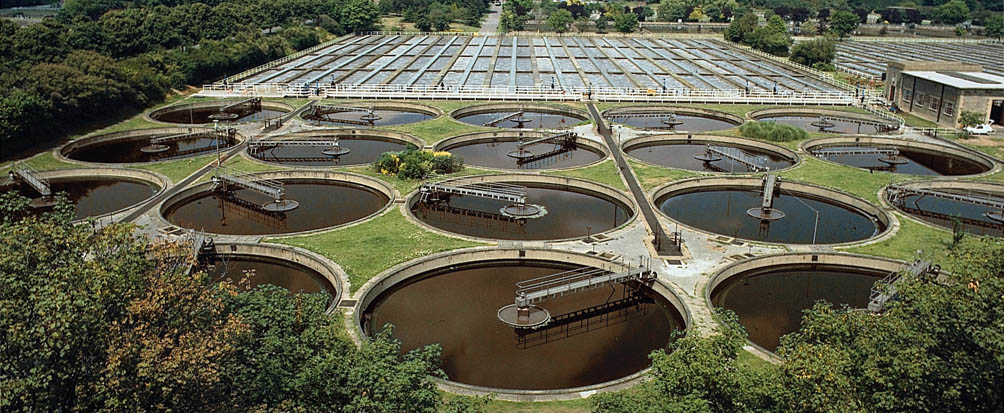Understanding Wastewater Therapy Processes and Their Environmental Influence
The details of wastewater treatment procedures play a critical duty in mitigating ecological difficulties associated with water contamination. Each phase, from initial to sophisticated therapies, is made to address specific impurities, eventually safeguarding both public wellness and aquatic environments.
Summary of Wastewater Treatment
How is wastewater changed right into a secure source for the environment? Wastewater treatment is an important process developed to remove contaminants from made use of water, thus securing public health and wellness and securing ecological communities. This procedure begins with the collection of wastewater from residential, commercial, and business resources, which is after that routed to treatment centers.
At these centers, different physical, chemical, and biological methods are used to treat the wastewater. Ultimately, organic treatments, such as activated sludge processes, utilize microbes to damage down organic issue.
The treated effluent can be securely released right into all-natural water bodies or reused for irrigation and industrial purposes, promoting resource preservation. Additionally, the therapy procedure produces biosolids, which can be repurposed as plant foods or soil modifications, better enhancing sustainability.
Stages of Treatment Processes
The wastewater therapy procedure commonly consists of three primary stages: initial, key, and additional treatment. Each stage offers a distinct role in decreasing the toxin lots and ensuring the effluent fulfills environmental standards prior to discharge.
The key therapy stage concentrates on the physical splitting up of suspended solids from the wastewater. Via sedimentation, larger bits resolve at the end of sedimentation containers, creating sludge, while lighter materials, such as oils and greases, float to the surface and are skimmed. This procedure substantially reduces the natural and inorganic load in the wastewater.
Secondary treatment is a biological procedure intended at more decreasing the concentration of organic issue. This phase is crucial for accomplishing the needed biochemical oxygen demand (FIGURE) reduction, inevitably leading to cleaner effluent all set for discharge or further treatment.

Advanced Therapy Technologies
Adhering to the additional treatment processes, advanced treatment innovations play an important function in further improving the top quality of dealt with wastewater. These modern technologies are created to remove recurring pollutants that are not efficiently eliminated throughout main and second therapies, making certain the effluent fulfills rigid governing standards.
Among the commonly made use of innovative therapy methods are membrane filtration, reverse osmosis, and advanced oxidation procedures. Membrane filtering, consisting of microfiltration and ultrafiltration, is reliable in separating fine particles, microorganisms, and colloids from the water (Wastewater). Reverse osmosis makes use of semi-permeable membranes to get rid of dissolved solids, resulting in premium water appropriate for numerous applications
Advanced oxidation procedures (AOPs) utilize solid oxidants to weaken natural toxins, including drugs and personal care products that are resistant to traditional therapy. These techniques improve the biodegradability Wastewater of complex compounds, promoting their removal.
Another substantial innovation is making use of biological nutrient removal procedures, which especially target nitrogen and phosphorus, preventing eutrophication in obtaining water bodies. Overall, advanced therapy modern technologies are crucial for attaining higher degrees of purification, promoting water reuse, and guarding public health while resolving the challenges connected with wastewater monitoring.
Ecological Benefits of Therapy
Various environmental advantages develop from efficient wastewater treatment procedures that add to ecosystem health and wellness and sustainability. Largely, these processes dramatically reduce the release of dangerous contaminants right into natural water bodies, which helps keep aquatic communities. By eliminating contaminants such as hefty steels, nutrients, and pathogens, dealt with wastewater reduces the danger of waterborne conditions and advertises biodiversity in marine atmospheres.
Furthermore, wastewater therapy centers commonly use innovative modern technologies that enable water recycling and reuse. This technique not only conserves freshwater sources but likewise lowers the demand on natural water supplies. Boosted nutrient removal from wastewater can also protect against eutrophication, a procedure that results in algal blooms and succeeding oxygen exhaustion in aquatic systems.
Additionally, efficient therapy processes can lessen greenhouse gas exhausts, especially methane and laughing gas, which are usually released during unattended wastewater decomposition. By catching and utilizing biogas from anaerobic digesters, facilities can convert waste right into renewable resource, consequently adding to a reduction in fossil fuel reliance.
Challenges and Future Fads
While the ecological advantages of wastewater therapy are clear, numerous challenges linger that hinder ideal end results in this area. One significant problem is maturing infrastructure, which usually brings about inefficiencies see this site and raised operational costs - Wastewater. Many treatment plants were designed years earlier, and their abilities do not line up with contemporary needs, that include stricter regulative standards and higher volumes of wastewater because of urbanization

Looking ahead, there is an expanding focus my link on resource recovery and circular economy concepts within wastewater therapy. Developments such as anaerobic food digestion, which can create biogas, and advanced filtering innovations are obtaining traction. These methods not only enhance therapy performance yet also promote sustainability.
Ultimately, resolving these obstacles requires collaboration among stakeholders, financial investment in technology, and a commitment to continuous research study. By welcoming these fads, the wastewater therapy market can develop to meet the demands of an altering setting and society.
Final Thought
To conclude, wastewater therapy processes play an essential duty in improving ecological high quality and public wellness. The multi-stage therapy structure, paired with innovative modern technologies, properly mitigates pollution and advertises sustainable water monitoring. By attending to residual contaminants and lessening nutrient drainage, these procedures add to the conservation of aquatic communities and the reduction of greenhouse gas emissions. Continued advancements and adaptations in therapy approaches will be vital for overcoming emerging challenges and ensuring the sustainability of all-natural sources (Wastewater).
Comments on “The Connection Between Wastewater Management and Public Well-being”